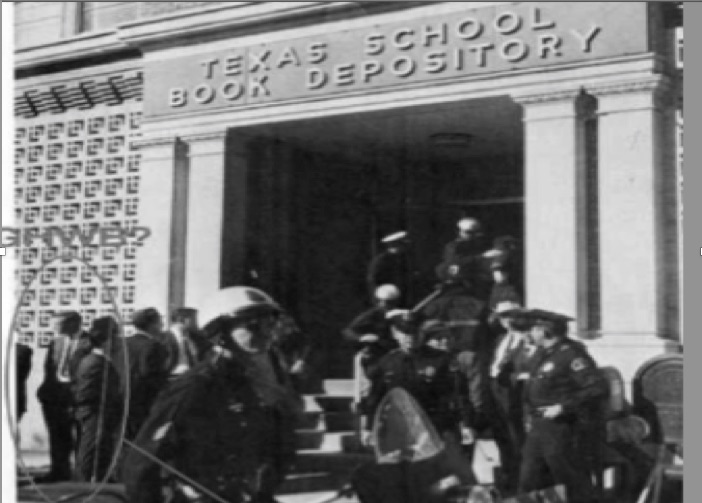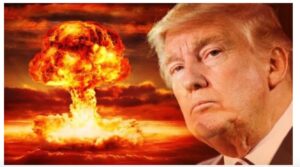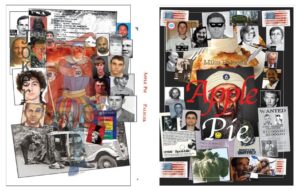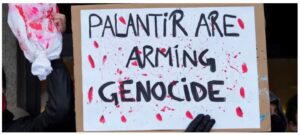Charles Burris
George H. W. Bush is dead. Regime journalists across the nation are scrambling to compose obituary prose concerning the late president. Here are hard cold facts which will not be included in such puerile accounts.
“Former reporter for the Houston Post, Pete Brewton tells of one of the most momentous stories of the past 50 years and how it has been suppressed by the establishment media and the Congress. Pete’s book The Mafia, CIA and George Bush, shows the incredible complexity of the relationships in the operation of the destruction of hundreds of Savings and Loans at the hands of the CIA and the Mafia, stealing many billions of dollars in the process, and leaving the taxpayers to bailout the banks. Big names at the state and national levels of power are involved, including Lloyd Bentsen, the Bush family, and power brokers in Houston. People such as Charles Keating and Don Dixon, who are mentioned prominently in the press in connection with the S & L debacle, were merely front men or “cutouts” for the main movers. Keating and his ilk only took millions; the CIA and the Mafia looted billions.”
In his classic book on power elite analysis, The Yankee and Cowboy War, researcher Carl Oglesby divided up the Post-WWII American ruling class into two internecine factions: the northeastern seaboard Yankees versus the Sunbelt nouveau riche Cowboys. The amazing political success of George Herbert Walker Bush was his uncanny ability to stand astride and have one foot firmly planted in each of these competing factions.
Essential to understanding the Bush legacy is the historical background of the 1980 October Surprise when key individuals of the Reagan/Bush campaign covertly met with top members of the Iranian government to prevent the release of the 55 Americans held hostage in Tehran before the November election, ensuring the defeat of Democrat incumbent Jimmy Carter. The hostages were released on the day Ronald Reagan took office. Critical arm shipments, materiel and military supplies soon began flowing to the Khomeini regime, years before the more widely known Iran-Contra Scandal, which almost brought down the Reagan administration.
Barbara Honegger worked as a researcher at the Hoover Institution before joining the Ronald Reagan administration as a researcher and policy analyst in 1980. She was the Director of the Attorney General’s Anti-Discrimination Law Review at the Department of Justice. After leaving Washington, she became the Senior Military Affairs Journalist for the Naval Postgraduate School.
While working for Reagan she discovered information that convinced her that George H. W. Bush and William Casey had conspired to make sure that Iran did not release the U.S. hostages until Jimmy Carter had been defeated in the 1980 presidential election.
In 1987 Honegger began leaking information to journalists about the Reagan administration. However, it was not until Reagan left office that Honegger published October Surprise (1989). In her book, Honegger claimed that in 1980 William Casey and other representatives of the Reagan presidential campaign made a deal at two sets of meetings in July and August at the Ritz Hotel in Madrid with Iranians to delay the release of Americans held hostage in Iran until after the November 1980 presidential elections. Reagan’s aides promised that they would get a better deal if they waited until Carter was defeated.
In the years since October Surprise was published other sources such as Ari Ben-Menashe, an Iranian-born Israeli businessman, security consultant and author, who was previously an employee of Israel’s Military Intelligence Directorate from 1977 to 1987 and an arms dealer; the late premier investigative journalist Robert Parry, who authored numerous books and articles on the October Surprise; and Gary Sick, who served on the staff of the National Security Council under President Carter, have come forward to confirm Honegger’s story. Sick is the author of a book also entitled October Surprise. He was the principal White House aide for Persian Gulf affairs from 1976 to 1981, a period which included the Iranian revolution and the hostage crisis. After leaving government service, Sick served as Deputy Director for International Affairs at the Ford Foundation from 1982 to 1987, and is the executive director of the Gulf/2000 Project at Columbia University (1993–present), which has published five books and numbers many of the leading scholars on the Persian Gulf among its global membership. He is an adjunct professor of International Affairs and a senior research scholar at Columbia’s School of International & Public Affairs, where he has been voted one of the top professors. He is emeritus member of the board of directors of Human Rights Watch, and serves as founding chair of the Advisory Committee of Human Rights Watch/Middle East.
Many observers, including author Roger Stone in his LRC podcast interview with Lew Rockwell, and in his book, The Bush Crime Family: The Inside Story of an American Dynasty, believe that James Brady was the unfortunate collateral damage of the Bush-engineered assassination attempt on the life of Ronald Reagan. Brady later died at a retirement community in Alexandria, VA. He was 73. The medical examiner’s office in Virginia ruled the death a homicide and the D.C. Metro Police have opened a murder investigation. Observers at the time believed this could conceivably lead to murder charges against the alleged assassin John Hinckley in the 1981 shooting. Hinckley was found not guilty by reason of insanity on multiple charges. However those in the know never expected extradition papers to be served to Maine authorities regarding a certain geriatric resident of Kennebunkport in this matter. With Bush’s death that matter is closed.
Critics believe that the Reagan assassination attempt was a direct follow-up of the 1980 October Surprise scandal. The aim of the conspirators was to first engineer the removal of Jimmy Carter as president, then launch the coup d’état against Reagan.

The Deep State never wanted the former Hollywood actor and California faux cowboy governor Reagan as the GOP nominee. They were solidly behind Trilateralist George H. W. Bush, former CIA director who had been a trusted Agency asset since the 1950s, and the son of Prescott Bush, one of the closest friends of CIA director Allen Dulles since the 1930s, and one of the major senatorial supporters of the CIA during his tenure in office. Fired by JFK after the disastrous Bay of Pigs invasion of Cuba in 1961, the vengeful Dulles later became the major directing influence of the Warren Commission cover-up assigned by Lyndon Johnson to investigate Kennedy’s murder.
The renowned researcher John Judge was one of the leading experts in documenting the background of the Washington, D.C. Reagan assassination attempt and coup d’état. Many of his remarkable findings are online.
As with the JFK assassination by Lyndon Johnson and the top echelon of the National Security State in Dallas there were a wide variety of broken or ignored Secret Service protocols for protection of the president, as well as very suspect actions of the Reagan cabinet. Everyone remembers Secretary of State Alexander Haig’s bizarre “I am in control HERE at the White House pending the return of the vice president” statement to the White House press corps.
As this concise online summary of these events, “Did Bush Assassinate Reagan?” noted:
Bush started his takeover of government when he orchestrated a key reorganization of Reagan’s national security apparatus via a document known as National Security Decision Directive. Originally a product of Al Haig’s work, a second version not to his liking was formulated by the Bush camp which placed the vice president – rather than the Secretary of State – as the chairman of the Special Situation Group (SSG).
When Bush took the helm of the SSG, and after taking an initial report concerning the state of affairs domestically and internationally, he declared that there had been no conspiracy, on the authority of fragmentary FBI reports asserting that there was no such thing. This obstruction of justice followed exactly the tactic used by Nicholas Katzenbach when he wrote a memo within 3 days of the Kennedy assassination that Oswald must be found guilty as the lone assassin.
For more on the sordid backstory of epic criminality of Bush see the following volumes: The Mafia, CIA & George Bush, by Pete Brewton; Family of Secrets: The Bush Dynasty, The Powerful Forces That Put It In The White House, And What Their Influence Means For America, by Russ Baker; American Dynasty: Aristocracy, Fortune, and the Politics of Deceit in the House of Bush, by Kevin Phillips; Secrecy And Privilege: Rise of the Bush Dynasty from Watergate to Iraq, by Robert Parry; American War Machine: Deep Politics, the CIA Global Drug Connection, and the Road to Afghanistan, by Peter Dale Scott; Compromised: Clinton, Bush and the CIA, by Terry Reed and John Cummings; and The Iran Contra Connection: Secret Teams and Covert Operations in the Reagan Era, by Jonathan Marshall, Peter Dale Scott, and Jane Hunter (,pdf).




I bought my copy of “The Mafia, CIA & Geo Bush” from Pete Brewton, at a card table in front of the crooked Harris County family court, was well aware of his investigative reporting for the Houston Post. He had signed a publicating agreement with Simon & Schuster, to publish prior to 1992 election, they defaulted, he won judgement, but NO bookstore would stock this Truth. I had worked for a dozen crooked ‘developers’ and knew details on 50 projects mentioned in the book. This book is 100% correct, my review at Amazon.
Big Bush stage set the $600 billion Savings & Loan heist…by the Kennebunkport Costa Nostra